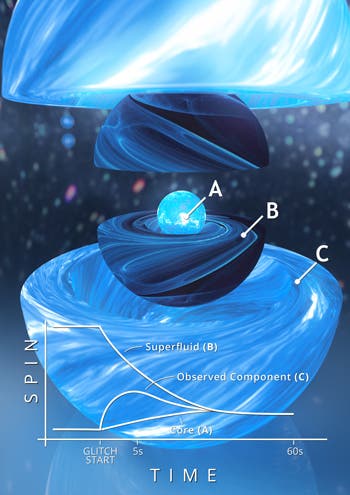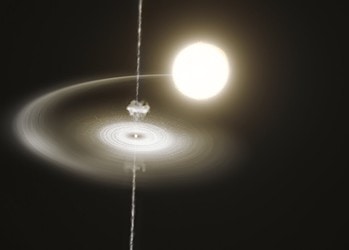
Pulsars are rotating neutron stars that emit a focused beam of electromagnetic radiation, resulting in their nickname as “lighthouses” of the universe. Pulsars come in all shapes and sizes, and some behave quite weirdly and seemingly chaotic — but that doesn’t mean there isn’t a pattern.
Vela, a neutron star located nearly 1,000 light-years away from Earth in the southern sky, is famous among astronomers because it “glitches” once every three years, suddenly speeding up its rotational period before slowing down back to normal.
Scientists aren’t sure why this weird star is behaving this way but new observations suggest that Vela seems to slow down its rotation rate immediately before the glitch. This was the first time astronomers have ever seen anything like this.
Neutron stars are the remnants of huge dead stars and represent some of the densest objects in the universe. Imagine an object with the mass of a sun squashed down to the size of a city — that’s how dense these objects can get.
Most neutron stars are observed as pulsars, which rotate at very regular intervals ranging from milliseconds to seconds.
For their new study, astronomers at the Monash University School of Physics and Astronomy reanalyzed observations of the Vela glitch made in December 2016.
This more thorough analysis revealed that Vela — which normally makes 11 rotations per second — started rotating even faster and then slowed down to a more normal speed very quickly.

Although astronomers aren’t sure why this happens, the observation is consistent with theoretical models that suggest that neutron stars have three internal components.
“One of these components, a soup of superfluid neutrons in the inner layer of the crust, moves outwards first and hits the rigid outer crust of the star causing it to spin up,” said Dr. Paul Lasky, an astronomer at the Monash School of Physics and Astronomy and co-author of the new study published in the journal Nature Astronomy.
“But then, a second soup of superfluid that moves in the core catches up to the first causing the spin of the star to slow back down.”
Ultimately, what this new study shows is that a pulsar glitch isn’t a straightforward, single-step process. Instead, a complex interplay of internal forces seems to generate sophisticated behaviors in the neutron stars, although the exact mechanisms are still a mystery. In the future, new observations and theoretical models may reveal more.






